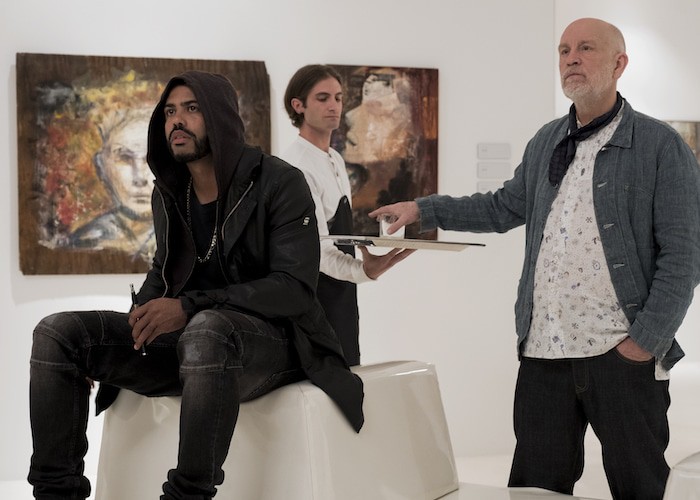
One of the biggest movies of this year’s Sundance Film Festival is already available to the rest of us. Dan Gilroy‘s Velvet Buzzsaw received decent reviews from the critics who saw it on a big screen out in Park City (our own Rob Hunter thinks it’s fine). Now it’s time for Netflix subscribers to decide for themselves when they watch the satirical art-world-set horror movie on their TVs, tablets, and phones.
Personally, I found it mediocre both as a satire and as a horror movie (though I like both Jake Gyllenhaal and Rene Russo and appreciated the Nightcrawler reunion), but whether you enjoy Velvet Buzzsaw or not, I recommend you check out the eight precursors I list in backward chronological order below. Some actually inspired Gilroy. Others should have. Each has at least a little more bite than his latest.
The Price of Everything (2018)

For a real look at the contemporary art market as it currently stands, including the significance of Art Basel, critics, dealers, museum and gallery curators, and big auctions at Sotheby’s, this recent HBO documentary (it debuted at Sundance last year) has you covered. And it’s thorough enough that you’ll easily see how ridiculous the whole thing is that you don’t even need a satirical take to lampoon any of it.
The film is directed by Nathaniel Kahn, who received an Oscar nomination 15 years ago for his personal documentary My Architect, about his own father. This time he’s going for a much broader and abstract look at the art market, with some focus on very different but rhyming artists Jeff Koons and Larry Poons and featuring a plethora of pretentious people. But if you’re part of that world, just as with Velvet Buzzsaw, you might shrug it all off as ordinary.
The Square (2017)
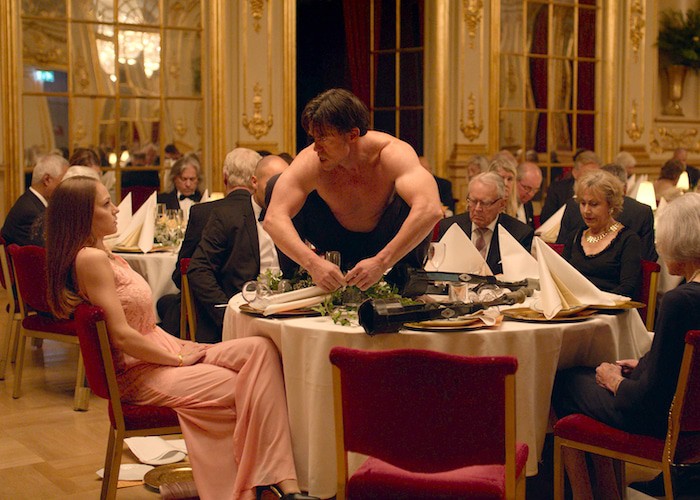
Want a sharp and funny and at times even disturbing satire of the art world? Move from the real deal just one year back for this Cannes-winning, Oscar-nominated Swedish drama from Ruben Ostlund (Force Majeure) about a distracted curator who keeps courting controversy. Who needs paintings to supernaturally murder people when Terry Notary playing a performance artist who goes too far with his method-level ape act during a fancy museum function is so much scarier?
Like Velvet Buzzsaw, the movie doesn’t work on everyone (our review is negative), and I’ll even admit that I don’t get all of it. Still, there are so many little bits to appreciate even if the whole thing doesn’t do it for you, including moments that reach near-Haneke level discomfort and any time Elisabeth Moss shows up on screen. Anyway, the first step is watching it. Then, before moving on to the next film on this list, join us in digging deeper into the real art that inspired parts of The Square.
In the Realms of the Unreal (2004)
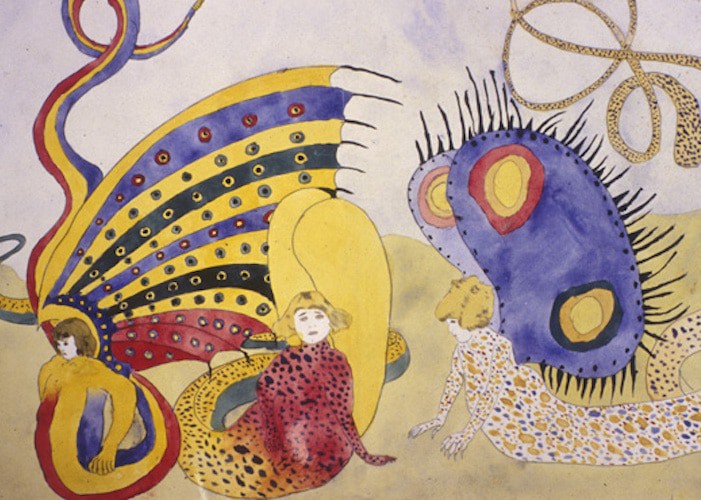
As for the real art and artists that inspired Velvet Buzzsaw, the clear basis for the late murderer/artist Ventril Dease is Henry Darger. He was a hospital custodian whose paintings, drawings, and writings were similarly discovered in his apartment only after his death in 1973, making him a posthumous icon in the world of outsider art. There’s no proof he was also homicidal, though some believe he at least had the mind of a serial killer while others think he very well might have murdered children.
Darger’s work, as you’ll see in Jessica Yu’s unconventional, award-winning documentary In the Realms of the Unreal, doesn’t look anything like Dease’s paintings in Velvet Buzzsaw. The frightening content and style there is more akin to Francis Bacon and Francisco Goya (both have been subjects of docs, too). But Darger’s story, especially as presented by Yu, is much more curious. Fortunately, there was no spell attached to his work that made them or other art attack their owners.
Final Destination (2000)
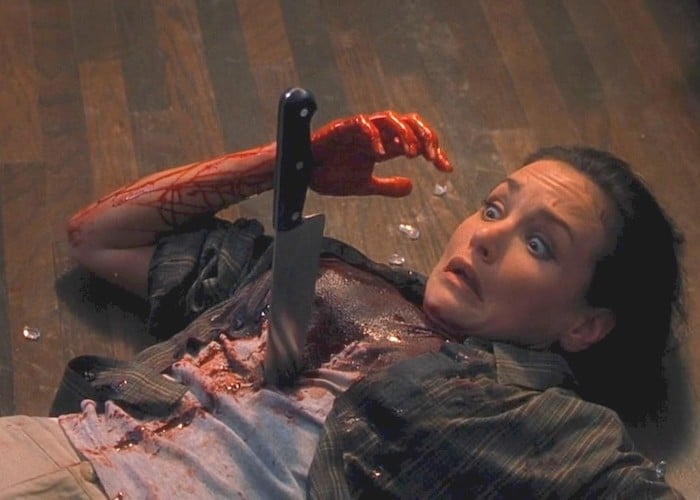
A lot of critics are making comparisons between Velvet Buzzsaw and the Final Destination franchise (“high-end Final Destination“; “haute Final Destination“; “arthouse Final Destination“; “Final Destination meets Night at the [Art] Museum” — and that’s not even the half of them). I don’t really think any of the kills in Gilroy’s movie come close to as clever or as elaborate or as viciously graphic as those in the first two Final Destination installments anyway.
The thing about the deaths in the Final Destination movies is that, yes, there’s a supernatural element to them, sometimes obnoxiously depicted, but really it’s about accidents. Some of them as simple as stepping out in front of a bus, others of the freak nature where someone slips and manages to strangle themselves with a clothesline. Or just a plane blowing up. Things that could happen even without an entity of Death. It’s not paintings come to life. That’s IT or Tales from the Hood or Ghostbusters II.
The Player (1992)
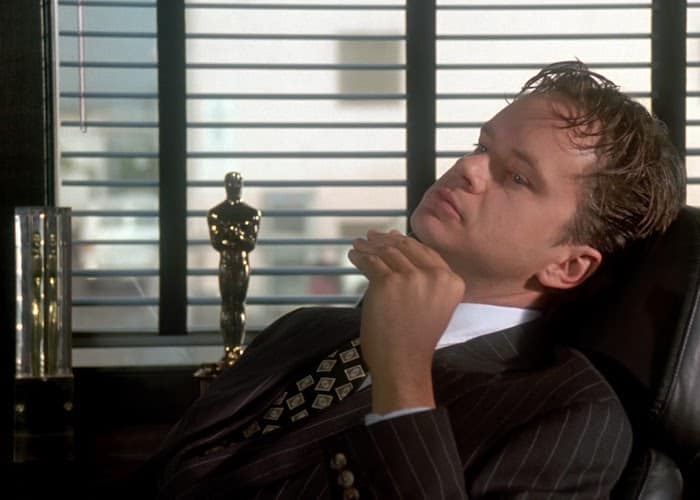
The one movie Gilroy has acknowledged as an influence is Robert Altman’s The Player. You could probably get that without him directly admitting it. He’s got a bit of an ensemble of intertwined characters and everyone is rather shallow and there’s murder involved. What he specifically said back in the fall of 2017 to Business Insider is, “It’s got a Robert Altman-like large ensemble cast. It’s got a The Player vibe to it.” Yeah, but that opening sequence at Art Basel shoulda been a single shot, then.
What’s interesting about The Player is that Altman has characters explicitly state the main joke of the satire, the idea of eliminating the screenwriters from the Hollywood equation. Yet there’s still a sharp subtlety to its lampooning of the movie business. And there’s a dark edge to it without going for anything out of the realm of possibility. Like The Square, it’s good satire by not needing to be too exaggerated let alone at all fantastical. You can tell, unlike Velvet Buzzsaw, it knows its stuff.
Ghostbusters II (1989)
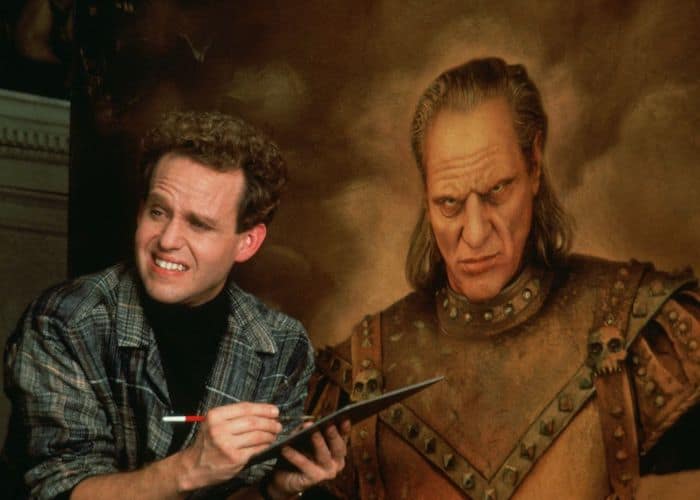
It didn’t take very long for people to make jokes aligning Ghostbusters II and Velvet Buzzsaw. Within a week of the latter’s trailer being released, Funny or Die had mashed up that spot with footage from the Ghostbusters sequel. As noted, Ghostbusters II similarly has evil paintings. Well, one, anyway. A portrait of the Vlad the Impaler-like Vigo the Carpathian is possessed by its subject’s soul, and it’s getting stronger by feeding off the hatred literally flooding through New York City or something.
By combining the two movies, editors Ryan Coopersmith and Charles Muzard elevate them both in the montage. Each comes across funnier than it actually is, at least, while Ghostbusters II comes off scarier and Velvet Buzzsaw less so. While the mashup doesn’t show any of Peter MacNicol, I’m now wondering if Gilroy couldn’t have used an additional character who becomes Dease’s goofy lackey for some purpose. Or does Hoboman fill that role?
Who is Killing the Great Chefs of Europe? (1978)
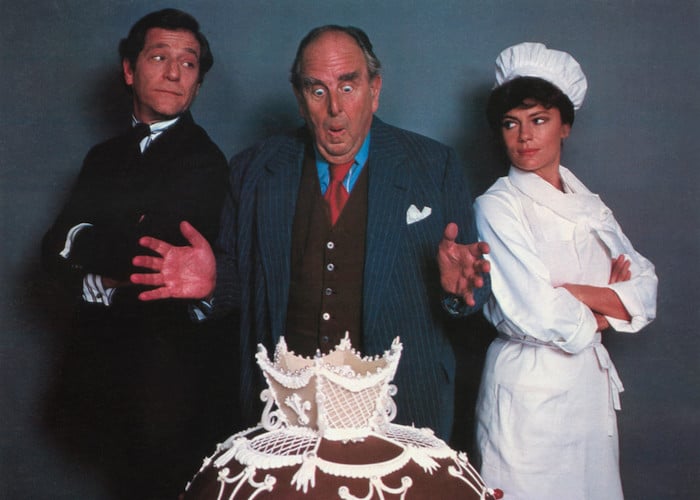
If you think Gyllenhaal is a hoot as the art critic in Velvet Buzzsaw, get a load of Robert Morley being his best Robert Morley as an exemplary gourmet food critic in Who is Killing the Great Chefs of Europe? (aka Too Many Chefs). He was snubbed by the Academy, unfortunately, for what should have been his first Oscar nomination in exactly 40 years. Perhaps the movie around him was ironically judged as being too boorish for their tastes. This is the director who’d go on to do Weekend at Bernie’s, after all.
Who is Killing the Great Chefs of Europe? is a bit silly and hardly a sharp satire of the culinary crowd, but that makes it all the more like the 40-year-old precursor to Gilroy’s movie, only for the foodie crowd (how was this not remade when celebrity chef culture was first on the rise?). The plot entails a mystery in which all the great chefs of Europe are being murdered. And not just simply offed but killed in a manner relevant to their signature dish. They’re baked, boiled, pressed, and meat-hooked.
A Bucket of Blood (1959)
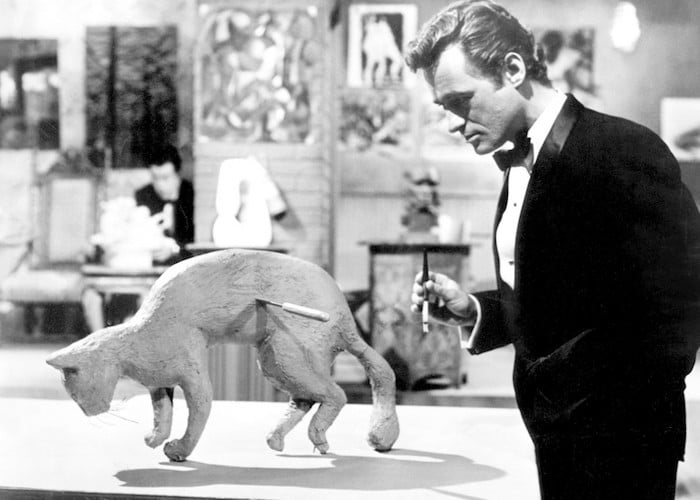
We end this week’s list with, coincidentally, a celebration of Dick Miller, who passed away a few days ago. Roger Corman’s A Bucket of Blood gave us the idea of a murdered person being viewed as macabre modern art a whopping 60 years ahead of the Toni Collette bit in Velvet Buzzsaw, no big deal. Even sicker, though, is the accidentally stabbed cat that is first passed off as a sculpture. This is a movie set in the beatnik world, so “Dead Cat,” as the piece is called, strikes a chord with the cafe crowd.
Miller is terrific as the dimwitted busboy who finds local fame with his creations — he’s a blast, he’s really cookin’, as the beatniks would say. The oblivious way he responds to people when they’re talking to him about the art and he’s basically talking about the kill is wonderfully performed. “I don’t have another cat,” he says when asked to do another piece. He means literally but it comes off as that he hasn’t got another great idea in him. But then he does find some human victims, er, subjects. It’s crazy, man.
Related Topics: Dick Miller, Final Destination, Ghostbusters, Movie DNA, The Player, Velvet Buzzsaw
